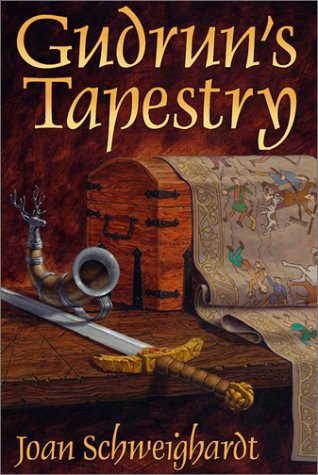Gudrun’s Tapestry
The Nibelungenlied is told in scores of versions both old, like the Poetic Edda upon which Joan Schweighardt based her version, and new. These many enduring versions attest to the power of the tale and to the fact that retelling of the grim twilight of men and worlds may always be welcome with whatever spin a modern teller may set upon her thread. We all know that Sigurd (or Siegfried) must die. What keeps us interested is seeing how he dies in the present retelling. Are the Burgundians the heroes–as they are in the version attributed to their ancient court? Or is Brunhild? And the very historic Huns–?
Unfortunately, Schweighardt betrayed the tale’s ancient power for me. I would have been interested to see the usually marginal character Gudrun come into her own, a feminist twist to the skein. But a poor choice of scenes and drama-diffusing chronology work against success. Few of the scenes are shown vividly; they are told instead. An annoyingly passive Gudrun must have details of the most exciting events brought to her by more active (and more interesting) characters while she languishes on furs in either depression or good-girl submission. She doesn’t even claim her revenge murder on Attila, catering to a modern distaste for such barbarism, perhaps? This hardly matters, as we aren’t set up with the burning need for this revenge by a vivid sack of the city of Worms to spur us on. This event seems too horrible to recount. Only mind-numbing inactivity in reaction seems worth recounting, and so that is the novel’s effect on the reader.
Beagle Bay Books’ commendable mandate to publish historical novels with powerful heroines dropped stitches with this one.










